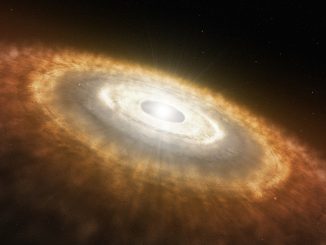
Astronomers have spotted what appears to be a third planet orbiting Proxima Centauri, the closest star to the Sun. The newly discovered world, dubbed Proxima d, has just 25 percent the mass of Earth and orbits at a distance of 4 million kilometres (2.5 million miles), taking just four days to complete one trip around its star.
The planet orbits between the red dwarf and the star’s habitable zone, the region where water can exist as a liquid on the surface, and is unlikely to host any sort of habitable environment as it’s known on Earth.
Located just 4.2 light years from Earth, Proxima Centauri is the nearest member of a triple star system. Two other exoplanet relatives were discovered orbiting the dwarf star earlier: Proxima b, with a mass similar to Earth’s that completes an orbit in the habitable zone every 11 days, and Proxima c, which is in a five-year orbit.
“The discovery shows that our closest stellar neighbour seems to be packed with interesting new worlds, within reach of further study and future exploration,” said João Faria, a researcher at the Instituto de Astrofísica e Ciências do Espaço, Portugal, and lead author of the study published in Astronomy & Astrophysics.
The new planet candidate was found using the European Southern Observatory’s Very Large Telescope in Chile using an instrument – ESPRESSO that precisely measured the slight wobble in Proxima Centauri’s motion caused by gravitational interactions with the orbiting planets.
Proxima d’s contribution to that wobble amounted to just 1.44 kilometres per hour. The exoplanet is the lightest yet discovered using the radial velocity technique.
“This achievement is extremely important,” said Pedro Figueira, ESPRESSO instrument scientist at ESO in Chile. “It shows that the radial velocity technique has the potential to unveil a population of light planets, like our own, that are expected to be the most abundant in our galaxy and that can potentially host life as we know it.”



